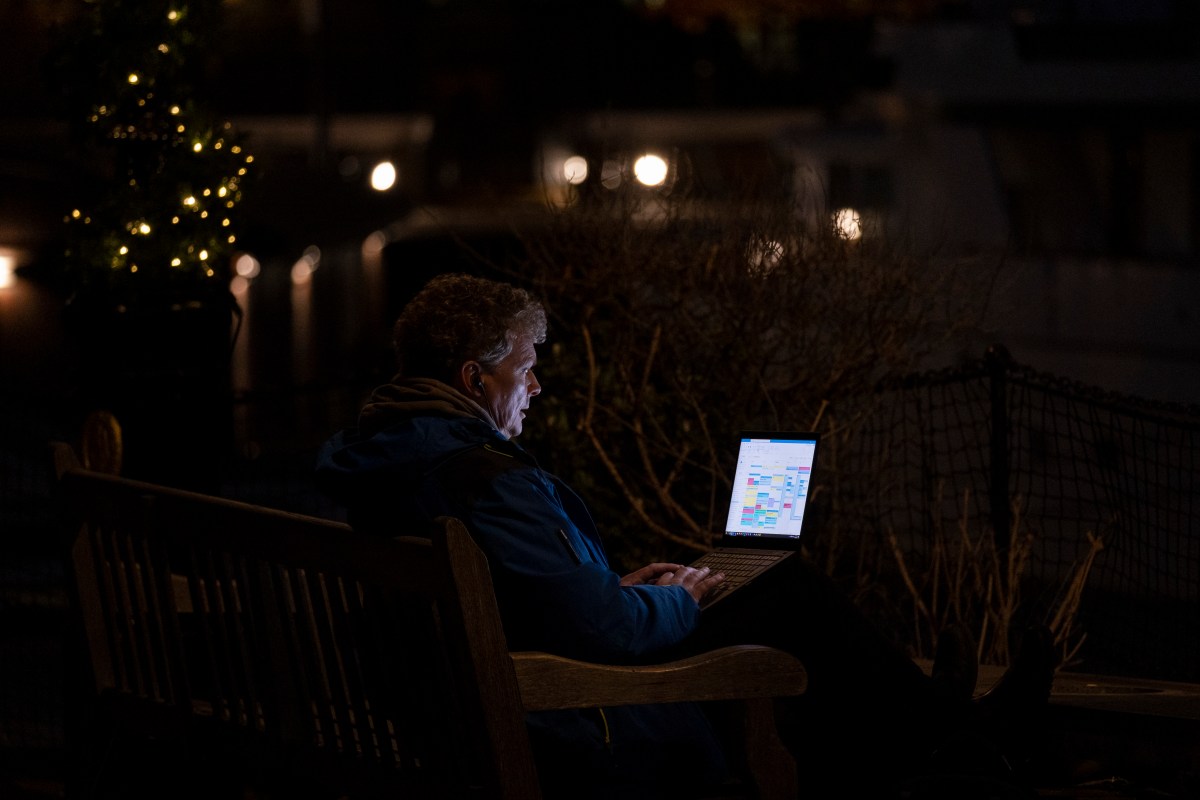Health experts have long been concerned about how little desk job workers stand throughout the day. A metric called “stand hours” measures how often people get up and move for just one minute an hour, and it’s actually somewhat rare to have a respectable rate.
But these days, researchers are also alarmed by how little employees breathe. When checking email, refreshing Microsoft Teams or Slack, or reviewing spreadsheets before a meeting, we tend to unconsciously hold our breath, sitting there in a stressed, stock-still coil. It’s called “screen apnea,” and, unsurprisingly, it’s not great for your health.
One Surefire Way to Boost Your Brain Health This Year
People with a clear sense of purpose score better on this “brain care” cardWhat Is Screen Apnea?
If that term rings a bell, screen apnea was once referred to as “email apnea,” stemming from a viral 2008 report.
It was coined by a former Microsoft executive named Linda Stone. A proponent of breathing exercises in her personal life, she noticed that her rituals stopped the second she started her workday. She’d toss them out the window in order to focus on the tasks at hand.
Stone conducted a study of 200 volunteers, monitoring their breathing rhythms and heart rates, and determined that 80% of people either “alter their breathing” or literally hold their breath while checking their email.
In the years since, as the ubiquity of laptops, smartphones and tablets has made screentime a round-the-clock pursuit (some adults average 10 hours of it a day), email apnea graduated to the more sinister “screen apnea.” That means we aren’t just holding our breath when reading a boss’s notes. We might be doing it while trying to secure a restaurant reservation, or texting a friend, or checking our fantasy football score.
How to Beat It
If there’s one thing this era has going for it, though, we’re all in agreement that making time to breath is important — and extremely effective.
As breathwork guru James Nestor told us in an interview earlier this year, “There’s irrefutable scientific evidence that this physiological, biological act we do 20,000 times a day has a huge impact on how we feel, physically and mentally.”
So how do you conquer your to-do list for the day without going blue in the face? Simple awareness is a great place to start. If you’d never heard of screen apnea before, take stock of your current state. Are you holding your breath right now? (A small screen may increase your likelihood of screen apnea, as it narrows your attention and energy to a fixed point…so if you’re reading this on mobile, go figure.)
Keep in mind that screen apnea is likely our bodies and brains doing their best to respond to perceived stimuli. But we’re overreacting to these stimuli, alsl day long, treating them like survival encounters in the jungle. Remind yourself — when opening an email, or trying to book concert tickets — that screentime isn’t a matter of life or death. You will be okay. A deep breath is your best bet.
Some experts recommend scheduling literal “breath breaks” on your computer. Go ahead. (There’s also an app you can install on your phone, which will compel you to take in some oxygen before hopping back onto Instagram. We’re fans.) But this is a great chance to knock out two birds with one stone. If you haven’t been breathing, you also probably haven’t been standing.
Get in a habit of standing up and moving around, which will jumpstart systems all throughout your body. We’ll always stump for a proper outdoor constitutional, but even a trip to the kitchen is better than nothing.
Whether you’re looking to get into shape, or just get out of a funk, The Charge has got you covered. Sign up for our new wellness newsletter today.



















